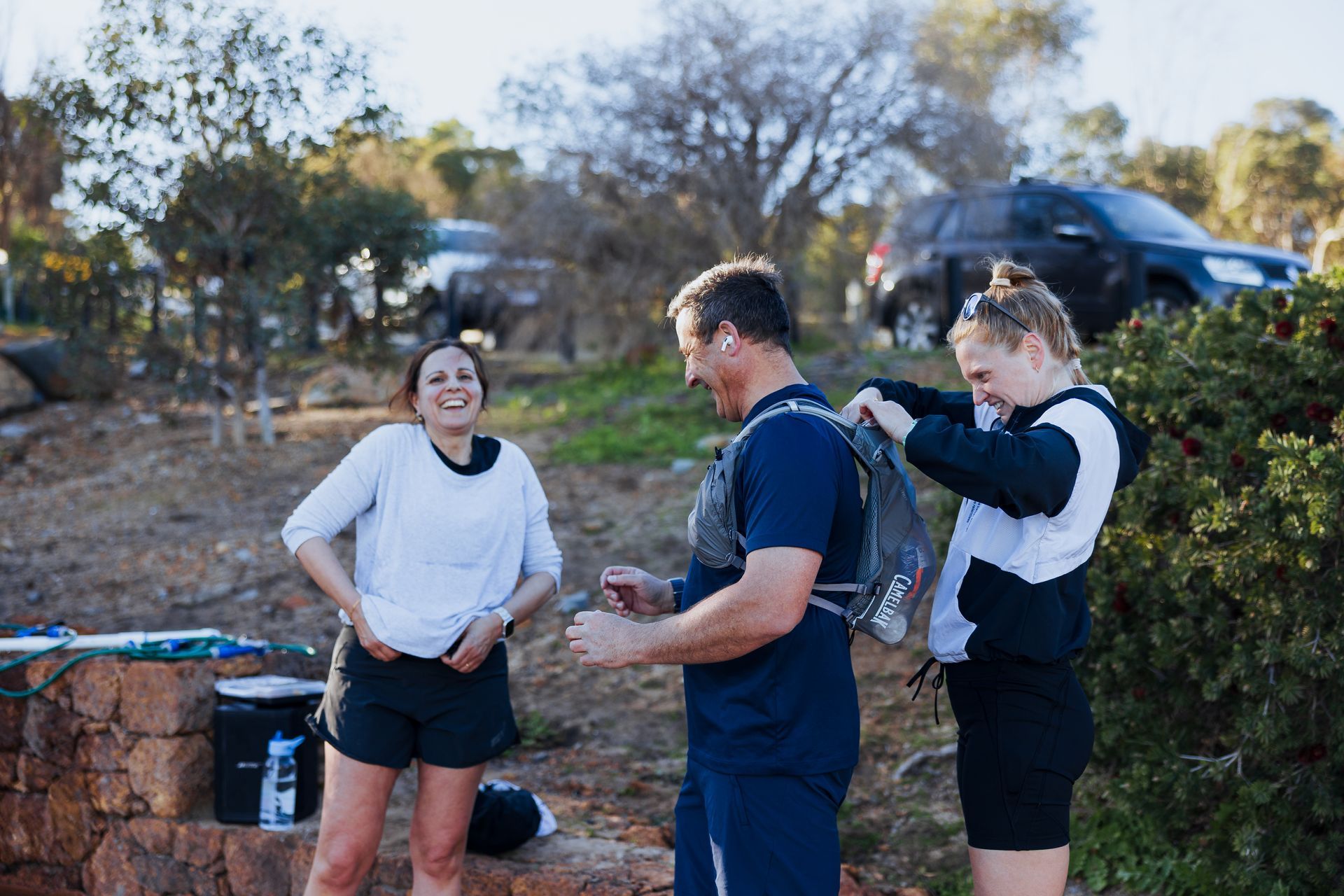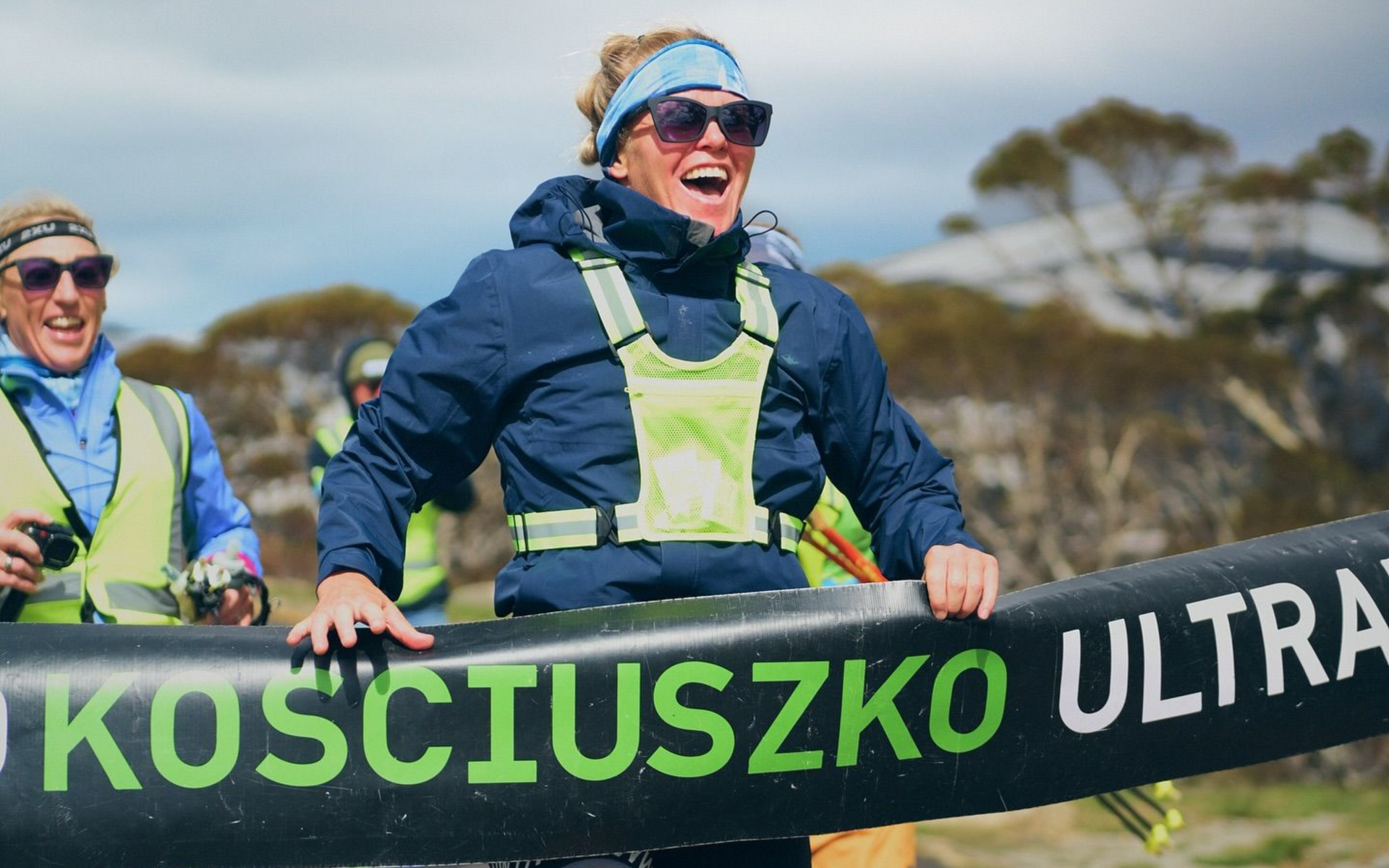
COACH'S CORNER - Get The Most From Your Aid Stations by Glen Smetherham
coach glen smetherham explains how you can get the very most out of aid stations in ultra marathons

I often tell a story to new runners about an old ultramarathon runner and a first timer. The gist of the story is that no matter if things are going well or everything is going wrong, ‘It will pass’. Here, I’m going to tell a sorry about contest between a couple of lumberjacks & the lesson can help with how you approach ultramarathon aid stations (can still be relevant in shorter races but not as much).
The contest pitted a young, formidable axeman against an older, more seasoned veteran. As the starting bell rang, the young lumberjack tore into his work with ferocious energy. He worked without pause, his powerful swings echoing through the forest, sweat flying from his brow. He quickly pulled ahead, felling tree after tree. The older lumberjack worked at a steady, rhythmic pace, but curiously, every hour, he would stop and disappear behind a small shed for a full ten minutes.
The young man scoffed. Seeing the older man's frequent breaks, he doubled his efforts, smug in the knowledge that his continuous work would guarantee an insurmountable lead.
Yet, as the day wore on, a strange thing happened. The young man's pace began to slow. His swings became less precise, his energy waned, and the trees took longer to fall. Meanwhile, the older lumberjack, emerging fresh from each break, maintained his steady, powerful rhythm. Soon, he caught up to the exhausted young man, and then, steadily, he pulled ahead.
By the end of the competition, the older man had won by a comfortable margin. Bewildered and defeated, the young lumberjack approached him. "I don't understand," he said. "I worked continuously, while you stopped to rest for ten minutes every single hour. How did you beat me?"
The old lumberjack smiled kindly and replied, "Ah, but I wasn't just resting. I was sharpening my axe."
Maybe I like the stories of old competitors teaching younger ones a lesson because I’m getting old, and I want to feel wise, but there is a lot to be learned from them.
When running an ultra, we can think of at the aid station as our shed, a place to sharpen our axe rather than just rushing through them without wasting a second. It’s easy for inexperienced runners to panic, and worry about catching runners ahead or runners behind catching up while they spend time at the aid station.
Here are a few ways I like to ’Sharpen my axe’ when at an aid station.
Arrive with a plan
Never enter an aid station without a plan. The people, the food, the chairs, the relief of stopping for a while can be overwhelming. Before you even see the checkpoint, run through a mental checklist. A simple and effective model is "Trash, Tasks, Food, Fill."
Trash (Physical & Mental): As you approach the aid station, gather all your rubbish such as empty gel packets. Upon arrival, make your first action throwing it into the bin. Use this physical act as a symbolic gesture. Tell yourself that the rubbish also represents the previous leg – all the discomfort, negative thoughts, and bad patches you’ve just endured. Let it all go. This small ritual can provide a powerful mental reset and help you focus on the present and what’s important in the moment.
Tasks: What physical jobs need doing? Reapply sunscreen or lube? Address a hotspot on your foot? Grab something from a drop bag? Do these before you get distracted by the food. Addressing a small issue like a bit of grit in your shoe might take 60 seconds, but ignoring it could cost you hours or even end your race.
Food: Now, eat and drink. Prioritise liquids first, then calories. Have an idea of what your stomach can handle and what you need. Sometimes eating something substantial (and real food) at an aid station is worth a few extra minutes you aren’t just relying on gels/bars while running.
Fill: With everything else done, refill your bottles or bladder and top up your pack supplies. This is your last step before you walk out. This is also something you can delegate to others while you are doing the previous steps. Although, always double check everything before leaving as it’s your responsibility to have everything you need for the next leg when leaving.
Triage Like a Medic
Not all problems are created equal. You must learn to triage yourself. Ask: "What is the one thing that will end my race if I don't fix it right now?"
Is it the onset of dehydration? A rock in your shoe that is starting to create a blister? These are Code Red issues. They are your first and only priority. Changing your socks because they feel a bit damp is a luxury; fixing the chafing that’s starting to bleed is a necessity. Focus on one thing at a time before moving on to the next and do them in order of importance. If you have 10 things to do at the aid station stop, you don’t want the one thing that you missed because you were rushing to be something that can put you out of the race.
Work While You "Rest" Or Rest while others work for you
Sharpening the axe is not passive. Even if you sit down, your time should be productive.
Eating? Use that time to mentally prepare for the next leg. Think about the terrain, the elevation profile, and visualise yourself running strong.
Refilling bottles? Use that time to talk to a volunteer. Ask about the conditions on the upcoming trail. Their information is gold.
Changing your socks? Perhaps ask crew or volunteers to refill your bottles or get something from your drop bag.
If you need gear fixed or watch recharged, ask others to help and get a few minutes with your eyes shut & doing a mental body scan.
IF you plan to sleep at an aid station in a long ultra, delegate as many jobs as you can to maximise your rest time.
Focus on the Process, Not Just the Outcome
Drawing from principles in sports psychology, shift your mental focus at aid stations from the overwhelming distance remaining to the immediate tasks at hand. Instead of thinking, "I still have 50 miles to go," concentrate on the process of the aid station: "Eat this gel, refill my water, re-lube my feet."
This process-oriented approach helps break down the enormity of the race into manageable steps, building confidence and maintaining a sense of control.
I’ll sometimes get coached runners to write WIN on the back of their hands. I’m not a hard ass coach telling them to make sure they win at all costs, I’m reminding them to focus on ‘What’s Important Now’. Think of the one thing that will help your race at this moment, dealing with hot spots, keeping hydrated, having a gel etc. That’s where the focus should be, in the moment and on the process. Outcomes take care of themselves if you get the process right.
The Power of a Smile
I often spend (too much) time before an ultra preparing the jokes I’ll tell at aid stations and to other runners. The goal isn't to get a standing ovation, but to break the tension and force a smile—from myself and those around me. This isn't just about morale; it's a physiological tool. Extensive research supports the "facial feedback hypothesis," which suggests that the physical act of smiling can genuinely influence your emotional state. A smile, even a forced one, can help decrease stress hormones, reduce the perception of effort, and make the experience feel more positive. So, tell that bad dad joke. Thank a volunteer with a huge, genuine grin. Comment on the absurdity of it all. The act of smiling sends a powerful signal to your brain that, despite the discomfort, things are fundamentally okay.
Let’s crunch the numbers
Still not convinced that a longer stop can be faster? Consider this simple scenario for a 15km leg.
Runner A (The Young Axeman): Rushes in and out of the aid station in 2 minutes.
Because they didn't properly fuel or deal with a niggle, their pace slows by 30 seconds per kilometre.
Stop time: 2 minutes + Run time: (15km at 7:30 min/km = 112 minutes 30sec) = Total time for the leg: 114 minutes 30sec.
Runner B (The Old Axeman): Spends a deliberate 5 minutes in the aid station. They eat well, lube up, and mentally reset. They maintain their steady pace.
Stop time: 5 minutes + Run time: (15km at 7:00 min/km = 105 minutes ) =Total time for the leg: 110 minutes
By spending an extra three minutes "sharpening the axe," Runner B bought themselves a four and a half minute advantage and, more importantly, is in a much better physical and mental state for the rest of the race.
Multiply that by the number of aid stations in a race as you can see the potential to make a big difference.
Of course there are times, such as shorter races when the cost/benefit calculations may be different.
It’s also still important to be quick through aid stations when possible. Just not at the risk of jeopardising the remainder of your run. So, the next time you run into an aid station full of rushed runners, crew and volunteers, resist the panic. Hear the wise old lumberjack's voice in your head. A dull axe requires more effort for less reward. Your body and mind are your axe in an ultramarathon. Take the time to keep them sharp.
The clock is ticking, but the wise runner knows that sometimes, the fastest way to the finish line is to stop and intentionally prepare for the journey ahead.









